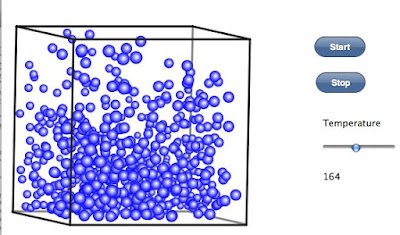Strain-induced friction anisotropy between graphene and molecular liquids
In
this paper, we study the friction behavior of molecular liquids with
anisotropically strained graphene.
Due
to the changes of lattice and the potential energy surface, the friction is
orientation dependent and can be computed by tensorial Green-Kubo formula.
Simple
quantitative estimations are also proposed for the zero-time response and agree
reasonably well with the molecular dynamics results.
From
simulations, we can obtain the information of structures, dynamics of the
system, and study the influence of strain and molecular shapes on the
anisotropy degree.
It
is found that unilateral strain can increase friction in all directions but the
strain direction is privileged.
Numerical
evidences also show that nonspherical molecules are more sensitive to strain
and give rise to more pronounced anisotropy effects
Title:
| Strain-induced friction anisotropy between graphene and molecular liquids | |
| Authors: | Liao, Meng To, Quy-Dong Leonard, Celine Vo Van-Hoang |
| Keywords: | HYDRODYNAMIC BOUNDARY-CONDITIONS FAST WATER TRANSPORT CARBON NANOTUBES PHYSICAL ADSORPTION N-ALKANES MODEL FLOW NANOFLUIDICS POTENTIALS INTERFACE |
| Issue Date: | 2017 |
| Publisher: | AMER INST PHYSICS, 1305 WALT WHITMAN RD, STE 300, MELVILLE, NY 11747-4501 USA |
| Citation: | ISIKNOWLEDGE |
| Abstract: | In this paper, we study the friction behavior of molecular liquids with anisotropically strained graphene. Due to the changes of lattice and the potential energy surface, the friction is orientation dependent and can be computed by tensorial Green-Kubo formula. Simple quantitative estimations are also proposed for the zero-time response and agree reasonably well with the molecular dynamics results. From simulations, we can obtain the information of structures, dynamics of the system, and study the influence of strain and molecular shapes on the anisotropy degree. It is found that unilateral strain can increase friction in all directions but the strain direction is privileged. Numerical evidences also show that nonspherical molecules are more sensitive to strain and give rise to more pronounced anisotropy effects. Published by AIP Publishing. |
| Description: | TNS07009 ; JOURNAL OF CHEMICAL PHYSICS Volume: 146 Issue: 1 Article Number: 014707 Published: JAN 7 2017 |
| URI: | http://repository.vnu.edu.vn/handle/VNU_123/28804 |
| ISSN: | 0021-9606 1089-7690 |
| Appears in Collections: | Bài báo của ĐHQGHN trong Web of Science |



Nhận xét
Đăng nhận xét